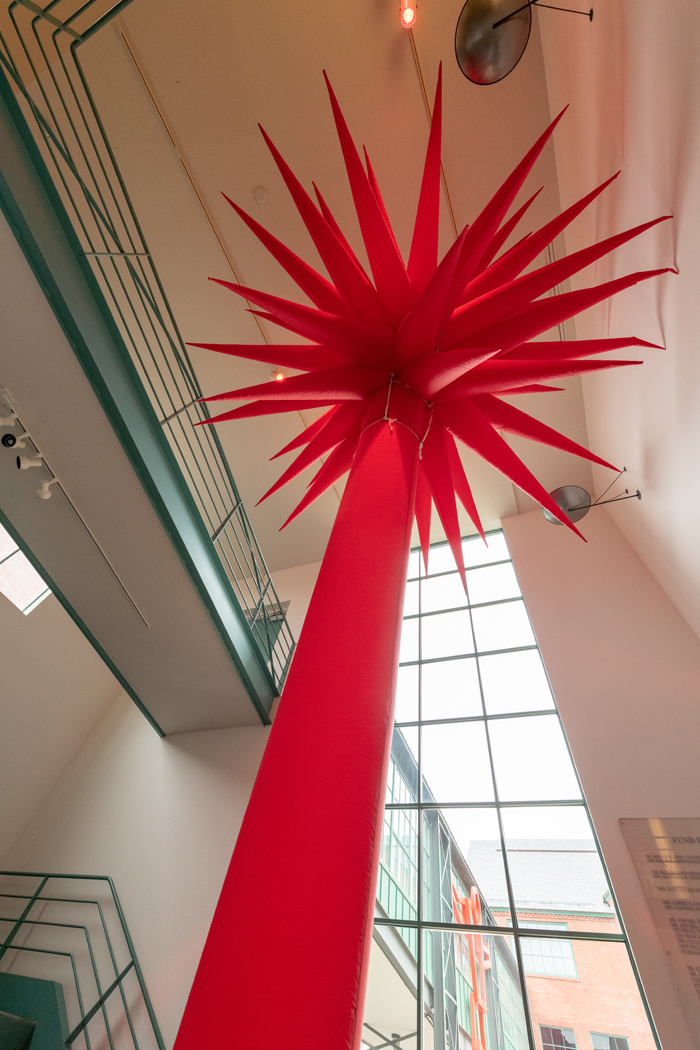Fire and Light
Fitchburg Art Museum • Fitchburg, MA • fitchburgartmuseum.org • Through June 2, 2019
In a long career that blurred boundaries between art and technology, Otto Piene was not one to paint behind the closed doors of a studio. “Cities and landscapes became my workshop,” the German-born artist explained, “and large groups of people became my partners—in contrast to working in the studio where the artist talks to himself.” A paradox, then, that for the last three decades of his life Piene and his wife and collaborator Elizabeth Goldring lived in Groton, MA, 40 miles from his base at MIT’s Center for Advanced Visual Studies. Fire and Light: Otto Piene in Groton, 1983-2014 shows that Piene’s “art farm” was no solitary retreat.

Otto Piene, Red Star, 2014, inflatable sculpture (44 cones), diameter of star: 14 ¾’, length of tube: 22′.
Courtesy of Sprüth Magers Gallery, Berlin, Los Angeles, London. Photo: ©2019 Charles Sternaimolo.
For one thing, Otto Piene’s materials could not be contained in a single studio. (In Groton, he built five of them.) His large-scale Sky Art projects turned light and air into ambitious public events—on the Mall in Washington or at the 1972 Munich Olympics—that captured the immediacy of performance art and the materiality of Earth art. In Red Star (2014), a 22-foot inflatable sculpture on view here, compressed air constantly transforms the work from a towering beacon to a fading memory and back again. Painting, too, came in for reinvention. At first glance, Cyclops (1993-94) is a mesmerizing swirl of red and black abstraction. We learn that Piene sprayed canvases such as this with adhesive and then lit it on fire. Sometimes he carefully controlled the heat and flame; other times he allowed the elements to guide the work to its conclusion.
Creatively assembled by curator Lisa Crossman with assistance from Candice Bancheri, Fire and Light pushes boundaries just as Otto Piene used to do. At the art farm—an alternative space full of visitors and students and possibilities—he moved from the studio into the city and the sky, entering “new space peacefully, freely, playfully.” Piene “thought deeply about the experiential aspects of his art and the energy in a landscape,” Crossman explains. “[H]is art can encourage us to engage with the region…in a new way.” The Groton farm, then, was its own 30-year work of performance art. Fire and Light traces the marks it left.
